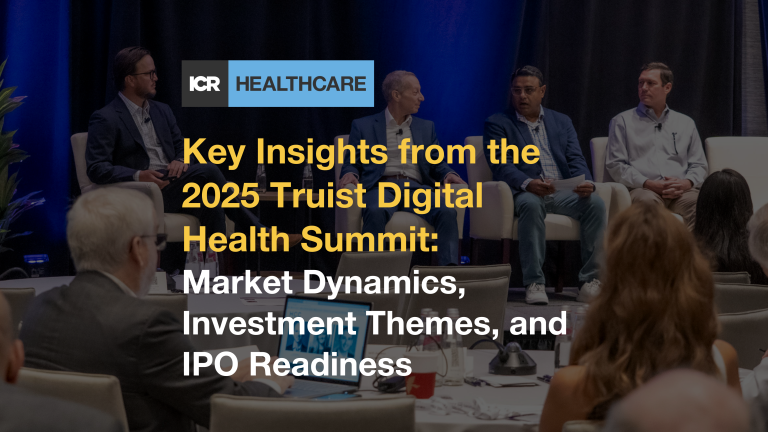Meeting current and prospective investors to share your company’s story is critical to the success of your investor relations program. A non deal roadshow (NDR) allows companies to share important information, such as company performance, future goals, and as well as connect with current and future investors.
Some companies may prefer a traditional non deal roadshow, traveling to multiple cities over several days. However, increasingly over the past few years, more companies opt to host virtual meetings, offering more convenience and flexibility, as well as lower costs.
Whichever method you choose, getting out on the road (physically or virtually) is a great way to build rapport with banking partners and strengthen relationships with shareholders.
For the most productive and effective NDR strategy, follow the eight tips below.
1. Think Strategically About Timing
While your management team should strive to be visible to maintain ongoing dialogues and forge relationships with potential new investors, there must be a balance. Being too visible can lead to investor fatigue and give the impression that you care more about meeting with Wall Street than you do about your day-to-day business operations. An NDR is most valuable when you have something important to communicate: recent data, recent financial performance, a new program, updated forecasts, or a change in company direction.
2. Be Flexible to Find Ideal Roadshow Dates
Aim to lock in dates that work for management’s schedule and optimize attendance, avoiding conflicts with investor conferences and industry events. Quarterly earnings periods can also present conflicts. During this time, investors are often consumed with attending conference calls and reading earnings transcripts, and have little time to consider new investments.
Work with your capital markets and IR advisors to determine the best dates that will garner the widest investor exposure possible. Keep in mind that if you will be hosting a virtual non deal roadshow, you can also consider days that used to be off limits (such as Mondays and Fridays), since there are no travel concerns.
3. Don’t Risk Overexposure to One Particular Region
In general, don’t allocate too many days to the same city. Ideally, your non deal roadshow strategy should expose you to institutional investors and financial institutions across the country in a controlled cadence throughout the year. Go beyond the common cities of New York, Chicago, and Boston; some of the best investor audiences can be found in other parts of the country — and world.
4. Maximize Investor Exposure
It can be a grind, but if logistics permit, commit to at least six or seven one-on-one, private meetings a day, primarily with existing large shareholders or potential investors who could become strong, long-term partners. If your non deal roadshow is in person, schedule at least one group event, like a breakfast or lunch, and invite select shareholders (or potential new investors) to a dinner. Ultimately, this will help you maximize your time in front of investors and allow you more time to address other business priorities.
5. Target Specific Geographic Areas, Even for a Virtual Non Deal Roadshow
Investment banks often assume that a virtual setting allows for limitless outreach, since anyone can dial into a conference call. However, try to limit outreach to specific geographic areas so you don’t approach the same accounts multiple times.
Consider this scenario: You commit to doing an NDR with two different investment banks within a few weeks of each other. Without any geographic guidelines, your partners could potentially send out invitations to the same accounts, which might send a wrong message. Instead, take a more systematic approach by allocating certain geographies to each bank involved in the NDR.
6. Strategically Group Investors for Virtual Meetings and Conference Calls
While group calls with multiple investors are necessary for virtual NDRs, they can present some unique challenges. First, make sure that the grouping of investors on each call makes sense. For example, it’s usually wise to avoid pairing long-term shareholders with new investors on the same call. If you do, you may find that one person asks most of the questions, or no one asks any questions, resulting in an awkward silence. For group calls, work with the NDR organizers to optimally to properly align the attendees of a meeting to address the varying level of familiarity and investment style.
7. For Virtual Non Deal Roadshows, Opt for Video
Sometimes during an NDR, you will reconnect with a portfolio manager that you have known for a long time; other times, you will meet with new people. Especially when meeting with new investors, opt for a video meeting, rather than audio only. Investors want to see the people who run the companies they may invest in, and seeing you can add credibility and instill confidence.
8. Prepare Your Messaging and Practice Q&A
Whether your NDR will be in person or hosted virtually, you must be prepared to tell a clear, cohesive company story and answer even tough questions. Especially over the past year or so, when conducting a virtual NDR, companies have taken a more leisurely approach than they would if they were traveling to investors’ offices. In some ways, doing back-to-back Zoom-type calls can actually be more challenging than face-to-face meetings, as there is not much time to download between meetings and tweak the commentary as needed from one meeting to the next. This is simply more reason to prepare and practice ahead of time. In any case, be sure to review investor backgrounds prior to the calls so that you know your audience, and rehearse Q&A.
Whether you choose to host non deal roadshows virtually or in person, your NDR schedule should maximize your visibility among investors and complement your appearances at other investor events and conferences. For more insight into how to formulate an effective investor relations strategy, download our eBook, “Investor Relations Primer: The Basics of an Effective Plan.”




